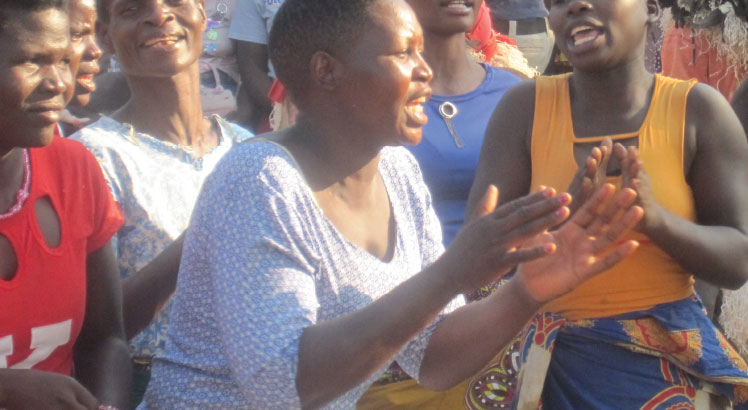Shaving twice for spirits
As the Malawi tourism month closes today, one of the forgotten areas that need rethinking is cultural tourism. KONDWANI KAMIYALA engaged on a cultural tourism trail in Chileka, Blantyre. He writes:
In many Malawian cultures, kumeta is a norm. Literally meaning shaving, this is when relatives of the deceased cut off their hair as part of final rituals for the dead.
It is clear that among the Chewa, Ngoni, Tumbuka, Tonga, Yao and Lhomwe tribes we have sampled, kumeta is an integral part of the rites carried out after the dead are interred.
Mostly, this is done on tsiku losesa, the day when close relatives gather before leaving the mourning home. In the past, the mourners literally had their heads shaved, but nowadays, a few hairs are clipped as a symbol.
Others, in line with their religious beliefs, just conduct prayers.

Although other cultures only have m’meto once, the Chewa conduct the rite twice.
In the book Chewa Traditional Religion, scholar J.W.M. van Breugel writes that there are two separate periods of mourning, the first lasting five to seven days for an adult, three days for a child and four weeks for a chief.
Writes the anthropologist: “It ends with the ceremony of first shaving (Kumeta maliro kachimodzi). The second period lasts until the second shaving (Kumeta maliro kachiwiri) which always takes place during the dry season from six to 12 months after the death.”
According to the scholar, unless kumeta kachiwiri is conducted, the spirit of the deceased is believed to be in a state of transition.
“The body is not yet decomposed, and the mzimu has not yet settled in the spirit world definitely, but hovers around the grave, their house and the village in general, being in a ‘liminal’ state.
“At the kumeta kachiwiri the people celebrate with much beer, food and dancing because the mzimu is now believed to have entered into his new definitive state. The body is now decomposed, the mourning is over, his widow is allowed to marry again,” writes van Breugel.
Ntefula Village in T/A Kuntaja’s area in Chileka, Blantyre, was a hive of activities that Sunday afternoon. It had been abuzz for the past four days as villagers participated in kumeta kachiwiri ceremony.
Gulewamkulu characters like kasinja, kapoli and even makanja were seen around the village, before they performed outside the house of a gulewamkulu leader Chilekadala, who passed away on July 4 2021.
The ceremony had two faces. It was a day to end the mourning for the deceased while allowing his widow Mayi Namale to remarry.
According to group village headman Ntefula, the norm is an integral part of the Chewa burial rites. It is mostly held in the hot season when traditionally there is plenty of food and not much work to be done in the fields.
“This is important for us. It is a culture that has been with us since time immemorial and it is not dying soon. For those who belong to gulewamkulu, you are assured that there will be nyau in abundance,” he said.
That Sunday afternoon, we found the chief in his court. Earlier that morning, he said, nyau were at his doorstep to pay homage and beg to perform openly later in the afternoon.
“They also come to let me know how the vigil went on because there is always lots of food, beer and dancing so it is important that they report if there were any fights,” said the chief.
In an article published in the Journal of the Royal Anthropological Institute anthropologist Hugh Stannus says the beer drinking and dances are an expression of the idea that the ‘corpse has disappeared’.
According to van Breugel, kumeta kachiwiri is also the day mwini maliro (mostly a maternal uncle to the deceased) sets the widow free to remarry, if none of the deceased’s brothers are willing to take her hand in marriage.
That hot Sunday afternoon, with the nearby Likhubula River tributary dried up, and the grass taking a brown colour, Chilekadala’s widow Mai Namale was happy.
It was a happy occasion as the ceremony progressed. The nyau were dancing in the open, with drums beating and shackles rattling as women clapped their hands while singing.
“Since Wednesday, we have been having this ceremony. It climaxed when they shaved my hair to say I am free to get married again. This is a norm we must not repudiate. The youth have to be taught to maintain the teachings of the ancestors,” said the 75-year-old.
From the outside, gulewamkulu may be seen as a man’s world. But, several authors indicate that women are also initiated into the camp.
Chilekadala’s daughter Mercy Dula was initiated and that Sunday afternoon, she was among the women adding colour by singing and clapping for the gulewamkulu. She was in high spirits as the drumbeats led the nyau into traditional dances.
According to her, Chilekadala had 15 children, but only seven remain. She is the ninth born.
For her, this was a happy occasion as it signified that her father’s spirit was now free. In Chichewa, she called the ceremony kufufuta mapazi—erasing his footprints.
“We are here to take part in this important occasion. This morning we went for several rites at the graveyard where he was buried. Timasesa. As a young person, I feel proud to sustain our cultural norms,” said Dula.





